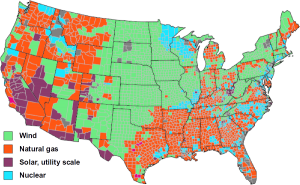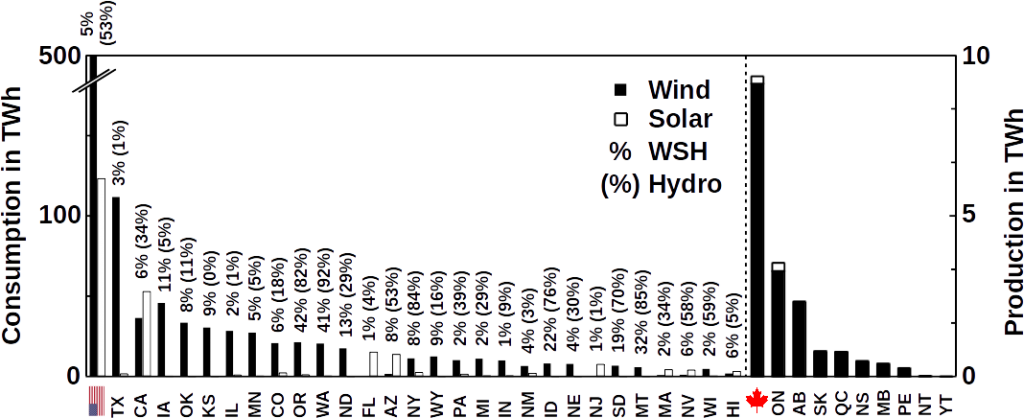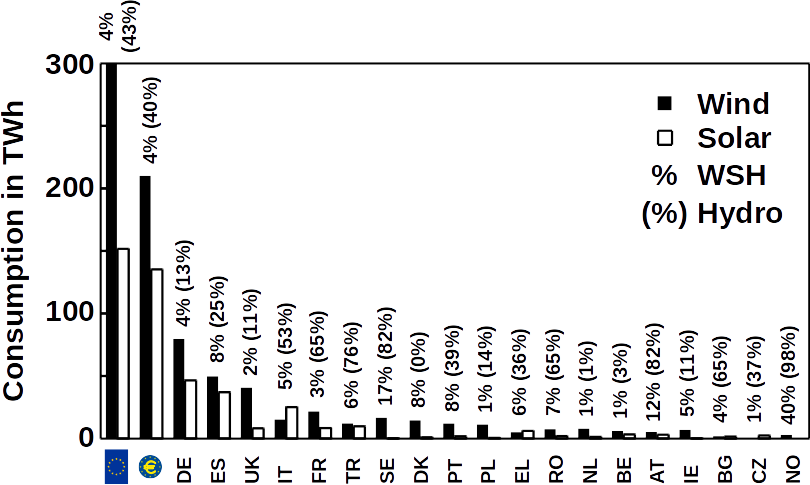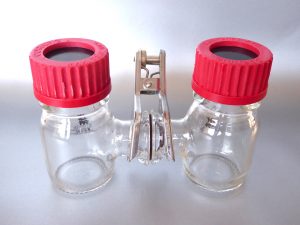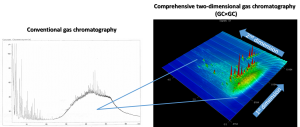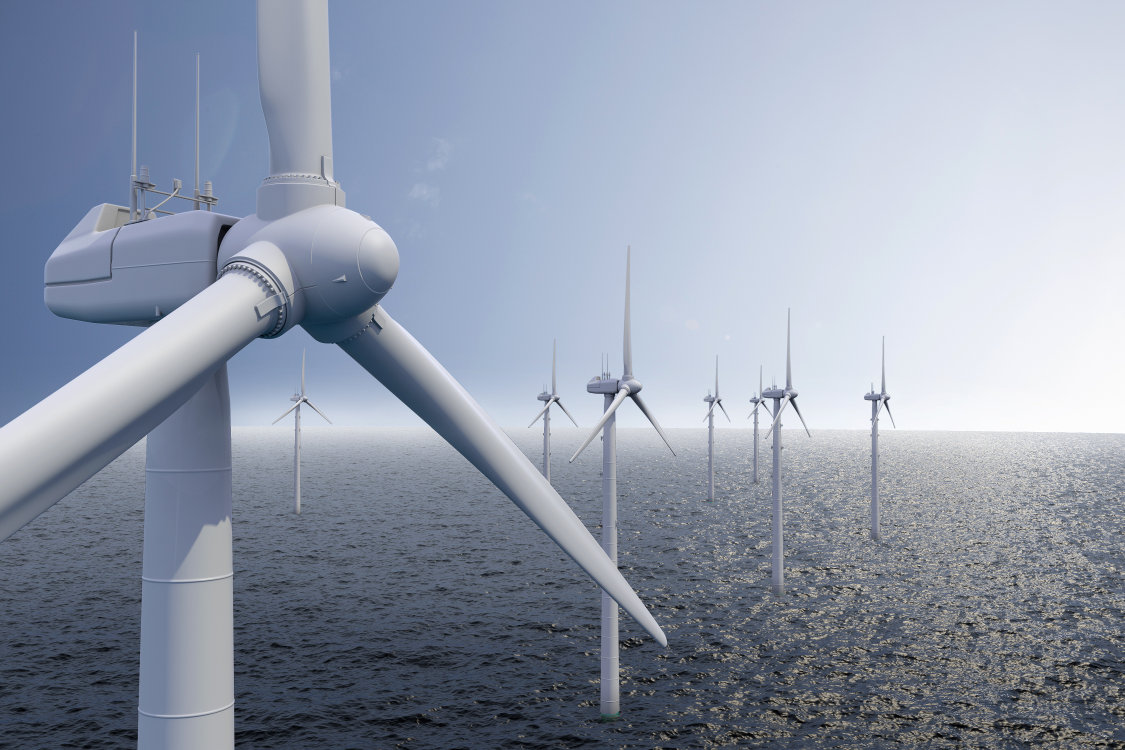
Denmark’s Electricity Portfolio
In our last post of our blog series about energy storage in Europe we focused on Italy. Now we move back north, to Denmark. Unsurprisingly, Denmark is known as a pioneer of wind energy. Relying almost exclusively on imported oil for its energy needs in the 1970s, renewable energy has grown to make up over half of electricity generated in the country. Denmark is targeting 100 percent renewable electricity by 2035, and 100 percent renewable energy in all sectors by 2050.

Proximity to both Scandinavia and mainland Europe makes exporting and importing power rather easy for the Danish system operator, Energinet.dk. This provides Denmark with the flexibility needed to achieve significant penetration of intermittent energy sources like wind while maintaining grid stability.
While the results to-date have been promising, getting to 100 percent renewable energy will still require a significant leap and the official policies that Denmark will use to guide this transition have yet to be delivered. However, there has been some indication at what the ultimate policies may look like. In their report Energy Scenarios for 2020, 2035 and 2050, the Danish Energy Agency outlined four different scenarios for becoming fossil-free by 2050 while meeting the 100 percent renewable electricity target of 2035. The scenarios, which are primarily built around deployment of wind energy or biomass, are:
- Wind Scenario – wind as the primary energy source, along with solar PV, and combined heat and power. Massive electrification of the heat and transportation sectors.
- Biomass Scenario – less wind deployment that in the wind scenario, with combined heat and power providing electricity and district heating. Transportation based on biofuels.
- Bio+ Scenario – existing coal and gas generation replaced with bioenergy, 50% of electricity from wind. Heat from biomass and electricity (heat pumps).
- Hydrogen Scenario – electricity from wind used to produce hydrogen through electrolysis. Hydrogen used as renewable energy storage medium, as well as transportation fuel. Hydrogen scenario would require massive electrification of heat and transport sectors, while requiring wind deployment at faster rate than the wind scenario.
Agora Energiewende and DTU Management Engineering, have postulated that this scenario report does in fact show that transitioning the Danish energy sector to 100 percent renewables by 2050 is technically feasible under multiple pathways. However, Danish policy makers must decide before 2020 whether the energy system will evolve into a fuel-based biomass system, or electricity-based wind energy system (they must decided which of the four scenarios to pursue).
Energy Storage Facilities – Denmark
Regardless of which energy policy scenario Denmark decides to pursue, energy storage will be a central aspect of a successful energy transition. There are currently three EES facilities operating in Denmark, all of which are electro-chemical (batteries). A fourth EES facility – the HyBalance project – is currently under construction and will convert electricity produced by wind turbines to hydrogen through PEM electrolysis (proton exchange membrane).
|
Project Name |
Technology Type |
Capacity (kW) |
Discharge (hrs) |
Status |
Service Use |
|
| RISO Syslab Redox Flow Battery | Electro-chemical | Flow Battery | 15 | 8 | Operational | Renewables Capacity Firming |
| Vestas Lem Kær ESS Demo 1.2 MW | Electro-chemical | Lithium-ion Battery | 1,200 | 0.25 | Operational | Frequency Regulation |
| Vestas Lem Kær ESS Demo 400 kW | Electro-chemical | Lithium-ion Battery | 400 | 0.25 | Operational | Frequency Regulation |
| HyBalance | Hydrogen Storage | Hydrogen Power-to-Gas | 1,250 | − | Operational | Renewables integration |
| BioCat Power-to-Gas | Methane Storage | Methane Power-to-Gas | 1,000 | − | Decommissioned | Gas Grid Injection & Frequency Regulation |
The HyBalance project is the pilot plant undertaking of Power2Hydrogen, a working group comprised of major industry players and academic research institutions aimed at demonstrating the large-scale potential for hydrogen from wind energy. The plant will produce up to 500 kg/day of hydrogen, used for transportation and grid balancing.
Worth noting is the decommissioned BioCat Power-to-Gas project, a pilot plant project which operated from 2014 to 2016 in Hvidovre, Denmark. The project, a joint collaboration between Electrochaea and several industry partners (funded by Energienet.dk), was a 1 MWe Power-to-Gas (methane) facility built to demonstrate the commercial capabilities of methane power-to-gas. The BioCat project was part of Electrochaea’s goal of reaching commercialization in late 2016, however, as of early 2017 no further updates have been given.
Energy Storage Market Outlook − Denmark
The energy storage market in Denmark will be most primed for growth should policy follow the Hydrogen Scenario, where massive amounts of hydrogen production will be needed to eliminate the use of fossil fuels across all sectors.
Renewable energy produced gases (hydrogen, methane) have the potential to balance the electricity grid in two primary ways: balancing supply and demand (“smart grid”), and balancing through physical storage. The smart grid, an intelligent electricity grid where production and consumption are administered centrally, presents significant opportunity for electrolysis technologies as short-term “buffer” storage (seconds to minutes). Bulk physical storage of renewable energy produced gases can act as a longer-term storage solution (hours, days, weeks, months) to help maintain flexibility in a fossil-free energy grid (The Danish Partnership for Hydrogen and Fuel Cells).
Without the hydrogen scenario, the potential for hydrogen-based energy storage in Denmark will be limited. In their 2016 report “potential of hydrogen in energy systems”, the Power2Hydrogen working group concluded that:
- hydrogen electrolysers would not provide any significant upgrade on flexibility for renewables integration over today’s sufficiently flexible system, and;
- by 2035, with the increased wind production, it was concluded that hydrogen electrolysers would in fact improve system flexibility, allowing for even more extensive penetration of wind energy in the system.
The potential for renewable energy produced gases in Demark is extremely high. There is a very distinct possibility that power-to-gas type of systems will be the linchpin of Denmark’s energy transition. While there appears to be little opportunity in the short-term, there will be extensive opportunity in the medium-to-long-term should the official energy transition policy focus on the hydrogen scenario, or a similar renewable gas based policy.
Read here our next post on the prospects for energy storage in Spain.
(Jon Martin, 2019)

